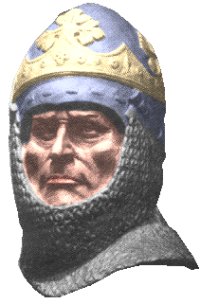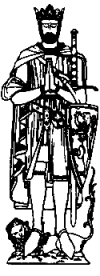King Robert The BruceFor some time Scotland was without a King and Edward's desire to conquer Scotland looked like a strong possibility. In the meantime the people of Scotland had found a new leader in William Wallace, son of a Clydesdale Laird. He led the Scottish army to a remarkable victory at Stirling Bridge in September 1297. However, Wallace later tasted defeat several times before being betrayed and captured by the English in 1305. |
 King Robert the Bruce |
 Brass Tomb Cover |
Robert the Bruce seized his chance of the throne in 1306 and was crowned on Easter Day of that year at Scone. His early days as King did not go well and after a defeat at Perth he spent over a year in hiding. When Bruce reappeared he was determined to lead the cause for Scottish independence and on Mid-summer's Day 1314 he defeated the mighty army of Edward II at Bannockburn, near Stirling, and with that victory he marched into the history books. Bruce reigned for 15 more years before passing away peacefully at his manor in Cardross, Dumbarton. His bones were taken and buried at the Abbey at Dunfermline and on his dying request, his heart was removed, placed in a casket and later taken into battle by his friend Sir James Douglas. His heart was later buried at Melrose Abbey. |